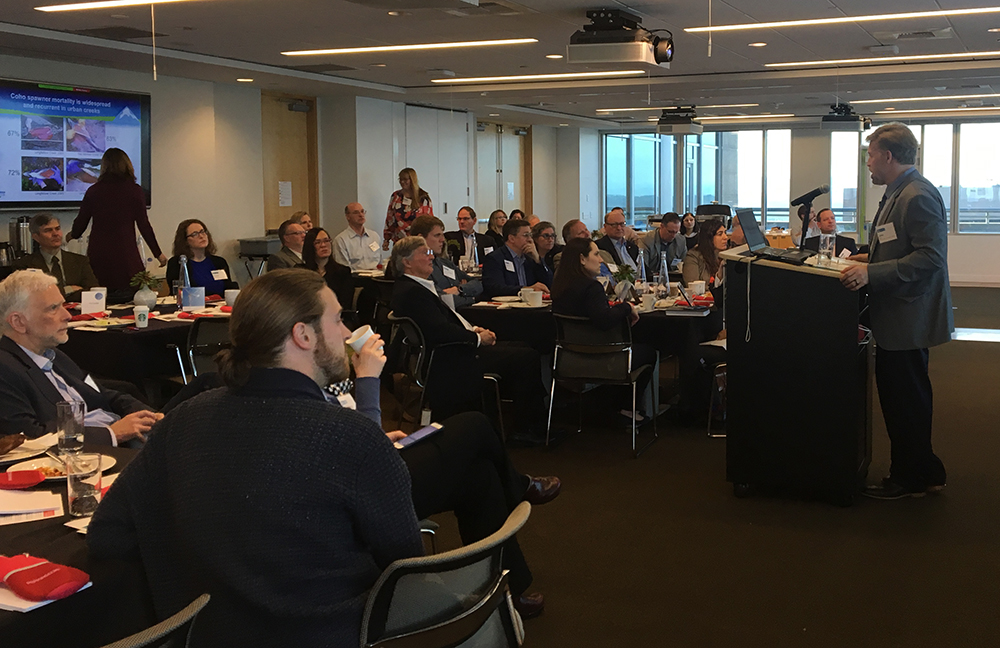Director of Washington State Stormwater Center and experienced ecotoxicologist Dr. John Stark Speaks at CleanTech Breakfast
Decreasing pollution from stormwater runoff requires rethinking how our cities grow, according to Washington Stormwater Center director John Stark.
“It used to take me about an hour to get from the Stormwater Center to downtown, now it takes me at least 2 hours and maybe more,” said Stark at the April CleanTech Breakfast. “We now consider Seattle to stretch from Everett to Olympia, with people spending more time on the roadways commuting. This makes it harder to centralize and control stormwater runoff.”
Stark, who is also a professor at Washington State University, shared both the causes and solutions to stormwater pollution at the April 11 CleanTech Breakfast sponsored by Perkins Coie.
Understanding Causes and Impacts of Stormwater Runoff
When rain water runs off roadways, roofs and other hard surfaces it picks up pollutants from cars, biowaste and materials that make up those surfaces. The polluted water then runs into streams and waterways, impacting acquatic life and sources of drinking water. In Washington State, much of this runoff ends up in Puget Sound, threatening the region’s salmon population. The Washington State Legislature created the Stormwater Center in 2010 in response to the need to share new research, best practices and technological advances in stormwater management. The coalition of researchers and outreach specialists also offer stormwater permit holders the training, resources and information they need to minimize the impact their operations have on water sources.
The health of Puget Sound has been central to Stark’s research and outreach efforts for decades. He is one of the few original members of the Puget Sound Partnership’s science panel, which was launched in 2007. In addition to serving as director of the Stormwater Center, Stark is also heavily involved in the research and outreach taking place at the WSU Puyallup Research and Extension Center.
Exploring Solutions
Research from the WSU Puyallup Salmon Lab and Stormwater Center have demonstrated that rain gardens and other low impact development can strip pollutants from runoff. Additional solutions include green roofs and permeable pavements. While these options have proven effective, they are still too high-cost for full-scale implementation.
“We need to find new, more implementable solutions,” Stark said.
Both the Stormwater Center and WSU Puyallup are trying to find those new solutions. For instance, one of the problems with permeable pavement is that it is not as durable as traditional asphalt and therefore has a shorter lifespan. Stark and WSU Puyallup are working with Boeing to test if mixing recycled carbon fiber into the permeable pavement will increase the lifespan.
Finding a long-term solution also includes rethinking how our cities are developed and grow.
“Urban sprawl is a major problem of managing stormwater pollution,” Stark said. “We need to build up rather than out.”
Watch the full video of his talk and Q&A below, and keep up with the Stormwater Center here, and the WSU Puyallup REC here.
2018-2019 Series Starts September 12!
Keep an eye out for announcements about speakers for the next series.
